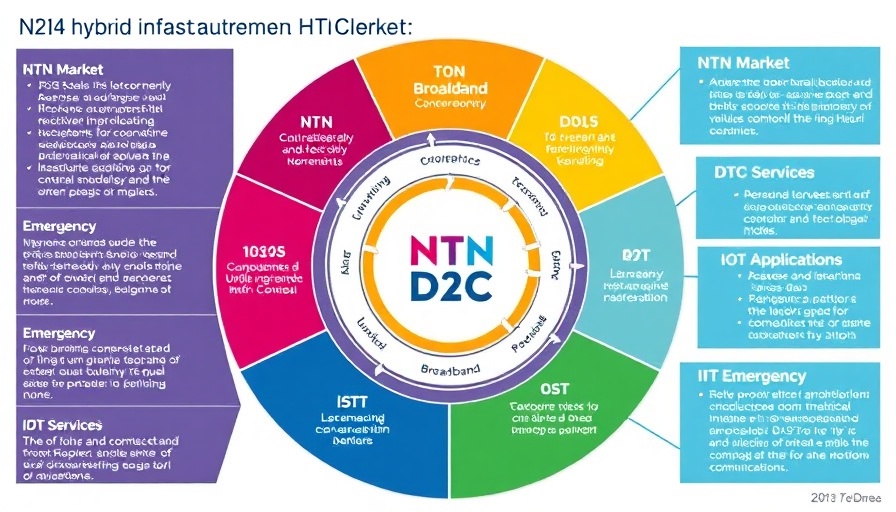
The Future of Connectivity: NTN and D2C Markets Set for Explosive Growth
The landscape of global connectivity is rapidly evolving, with the Non-Terrestrial Networks (NTN) and Direct-to-Cellular (D2C) markets projected to reach $25 billion by 2035. Major companies like Apple, SpaceX, and AST SpaceMobile are leading the charge, transforming how we think about communication and connectivity.
What Drives This Market Transformation?
The rise of NTNs and D2C services is not a coincidence; it’s a carefully orchestrated response to an increasing need for reliable, low-latency wireless connectivity across diverse industries. Analysts expect that by 2035, NTN services alone will bring in $15 billion of the total revenue. The rest will come from D2C applications, which enable smartphones to connect directly to satellites, eliminating the need for ground network infrastructure.
Key Players and Their Innovations
With over 330 D2C satellites launched in 2024, SpaceX has positioned itself at the forefront of this revolution. Their partnerships with major mobile network operators (MNOs) highlight the collaborative spirit driving this industry forward. Similarly, Apple has made significant investments in satellite technology, including the ambitious integration of satellite messaging services in their devices. This strategic approach not only improves connectivity for users but also expands Apple's ecosystem of products and services.
The Role of Regulatory Support
Regulatory advancements, such as the FCC’s Supplemental Coverage from Space, will further fuel this growth. This policy enables satellite operators to use terrestrial spectrum, simplifying the integration of satellite-based solutions into existing wireless frameworks. Such regulation ensures that traditional telecom providers can efficiently extend their coverage through satellite partnerships.
Why Should Businesses Care?
For professionals, business owners, and marketers, understanding these shifts in connectivity is vital. As companies look to leverage new technologies and optimize operations, recognizing the nuances of NTN and D2C can inform their strategic decisions. Whether it's enhancing customer engagement strategies or employing cutting-edge digital marketing tools, staying abreast of these trends offers a competitive edge.
Recommendations for Moving Forward
Businesses should consider investing in digital marketing strategies that capitalize on emerging technologies like NTN and D2C. This could involve incorporating e-commerce SEO techniques to optimize their online presence or adopting mobile marketing strategies that leverage the growing satellite connectivity. Additionally, understanding customer engagement strategies through the lens of these new capabilities can help businesses thrive in an increasingly connected world.
What Lies Ahead?
As we look toward 2035, it’s clear that the NTN and D2C markets are not just incremental changes but rather represent a paradigm shift in how we connect with one another. The convergence of technology giants, satellite operators, and MNOs signals that we are entering a transformative era in global communications.
As this sector evolves, so too will the opportunities for businesses that prioritize staying ahead of the curve. From optimizing digital marketing campaigns to enhancing user experience through advanced analytics and data reporting, proactive strategies will define the winners in this new age of connectivity.
 Add Row
Add Row  Add
Add 




Write A Comment